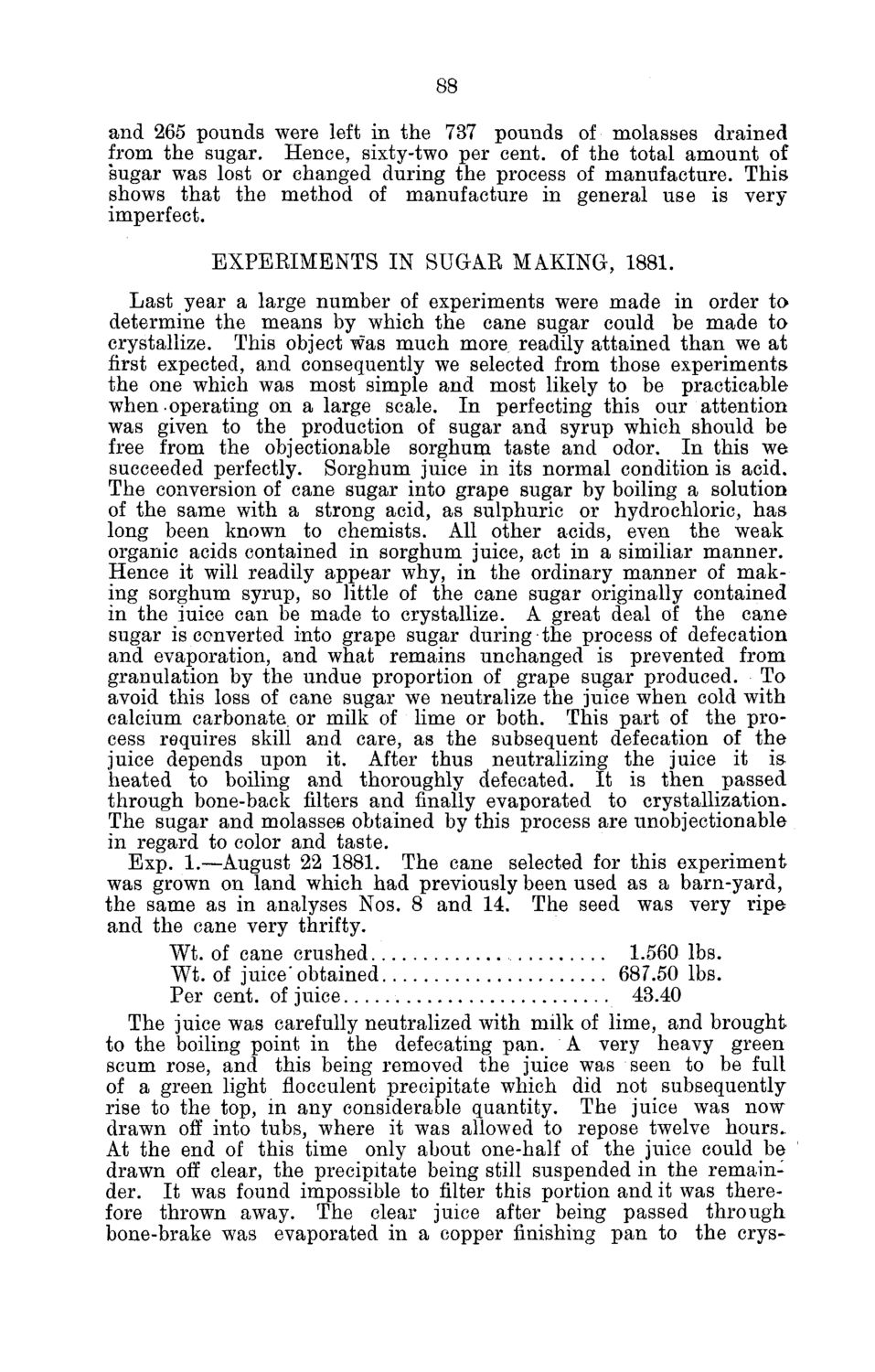| |
| |
Caption: Board of Trustees Minutes - 1882
This is a reduced-resolution page image for fast online browsing.

EXTRACTED TEXT FROM PAGE:
88 and 265 pounds were left in the 737 pounds of molasses drained from the sugar. Hence, sixty-two per cent, of the total amount of sugar was lost or changed during the process of manufacture. This shows that the method of manufacture in general use is very imperfect. EXPEEIMENTS IN SUGAR MAKING, 1881. Last year a large number of experiments were made in order to determine the means by which the cane sugar could be made to crystallize. This object was much more readily attained than we at first expected, and consequently we selected from those experiments the one which was most simple and most likely to be practicable when-operating on a large scale. In perfecting this our attention was given to the production of sugar and syrup which should be free from the objectionable sorghum taste and odor. In this we succeeded perfectly. Sorghum juice in its normal condition is acid. The conversion of cane sugar into grape sugar by boiling a solution of the same with a strong acid, as sulphuric or hydrochloric, has long been known to chemists. All other acids, even the weak organic acids contained in sorghum juice, act in a similiar manner. Hence it will readily appear why, in the ordinary manner of making sorghum syrup, so little of the cane sugar originally contained in the iuice can be made to crystallize. A great deal of the cane sugar is converted into grape sugar during the process of defecation and evaporation, and what remains unchanged is prevented from granulation by the undue proportion of grape sugar produced. To avoid this loss of cane sugar we neutralize the juice when cold with calcium carbonate or milk of lime or both. This part of the process requires skill and care, as the subsequent defecation of the juice depends upon it. After thus neutralizing the juice it is heated to boiling and thoroughly defecated. It is then passed through bone-back filters and finally evaporated to crystallization. The sugar and molasses obtained by this process are unobjectionable in regard to color and taste. Exp. 1.—August 22 1881. The cane selected for this experiment was grown on land which had previously been used as a barn-yard, the same as in analyses Nos. 8 and 14. The seed was very ripe and the cane very thrifty. Wt. of cane crushed 1.560 lbs. Wt. of juice' obtained 687.50 lbs. Per cent, of juice 43.40 The juice was carefully neutralized with milk of lime, and brought to the boiling point in the defecating pan. A very heavy green scum rose, and this being removed the juice was seen to be full of a green light flocculent precipitate which did not subsequently rise to the top, in any considerable quantity. The juice was now drawn off into tubs, where it was allowed to repose twelve hours. At the end of this time only about one-half of the juice could be drawn off clear, the precipitate being still suspended in the remainder. It was found impossible to filter this portion and it was therefore thrown away. The clear juice after being passed through bone-brake was evaporated in a copper finishing pan to the crys-
| |